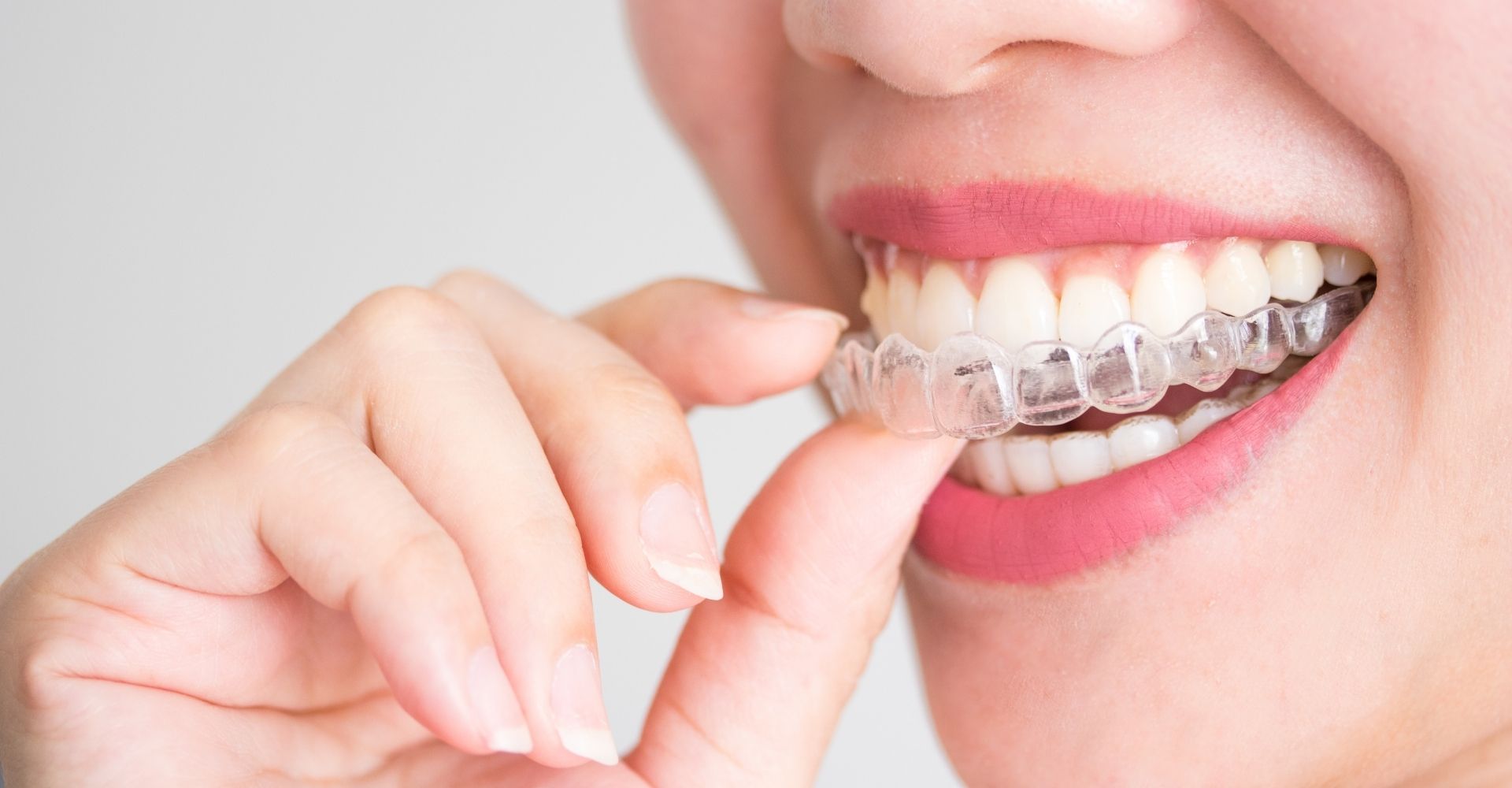Clear or invisible aligners are removable, 3D printed splints that are placed on top of the teeth and perform the same function as braces: correcting misalignments by applying continuous pressure.

When it comes to dental aligners vs braces effectiveness, aligners are just as capable of correcting orthodontic issues as braces. It is actually more imperative to consider the method each uses to achieve the desired smile goals. Below we will dive into the differences between clear aligners vs metal braces.
Unlike traditional braces, aligners are more discreet. They are lightweight and are nearly invisible when worn. Additionally, they are 3D cut to precisely fit your teeth and do not cover your gums, making them more invisible to the eye and comfortable to wear. This type of cut also helps with avoiding any chance of gum recession or inflammation.
Clear aligners are fully removable. The ability to take them on and off allows for better hygiene practices, protection playing sports, and for normal eating habits. However, in order to complete treatment on time, our doctors recommend wearing aligners for a minimum of 22 hours a day. When it comes to comparing the two in terms of removability, clear aligners are better than braces.
Clear aligners are made with a tough polymer backbone that has a reputation for being crack resistant. Although they are strong, aligners are not bulky and their surfaces are smooth, which works well with the mouth’s soft tissue. Thus there is a high probability that chafing and sores will happen with invisible aligners vs with braces.
When it comes to pressure on the teeth, it is possible to notice some slight changes when moving from one aligner to the next. However, because aligners change so frequently, this sensation is hardly noticeable and is very light.
Still wondering if clear aligners are better than braces? With clear aligners, there is nothing getting in the way when it comes to good oral hygiene practices. Brushing and flossing is done seamlessly just by removing the aligners, allowing for full accessibility.
Being able to enjoy any type of food with no problems is another difference between braces and aligners. When you eat during your clear aligner treatment, you only have to take the aligners out and store them in your box. After eating, you brush your teeth and put your aligners back on.
The only time a patient must be a little extra cautious with clear aligner treatment is when they have attachments placed on their teeth. Attachments can come off when chewing very hard food. However, orthodontic treatment can continue without a problem for a few days if an attachment has become dislodged or has fallen off.